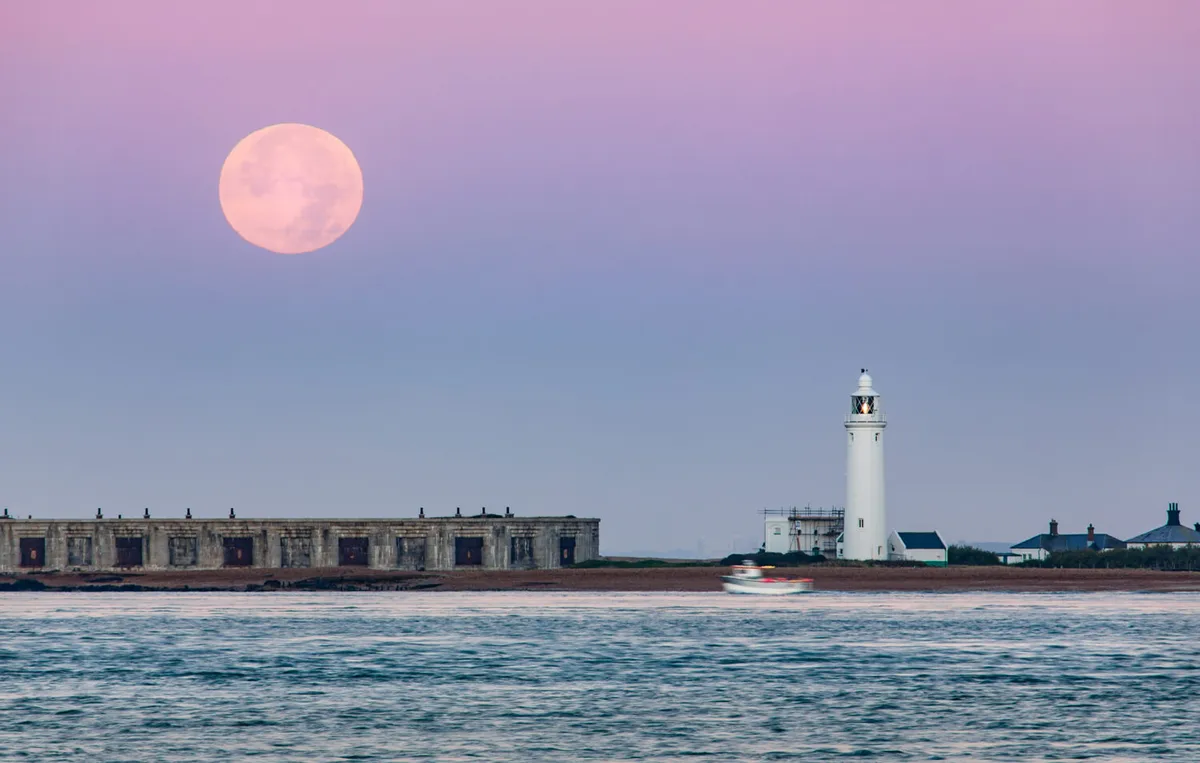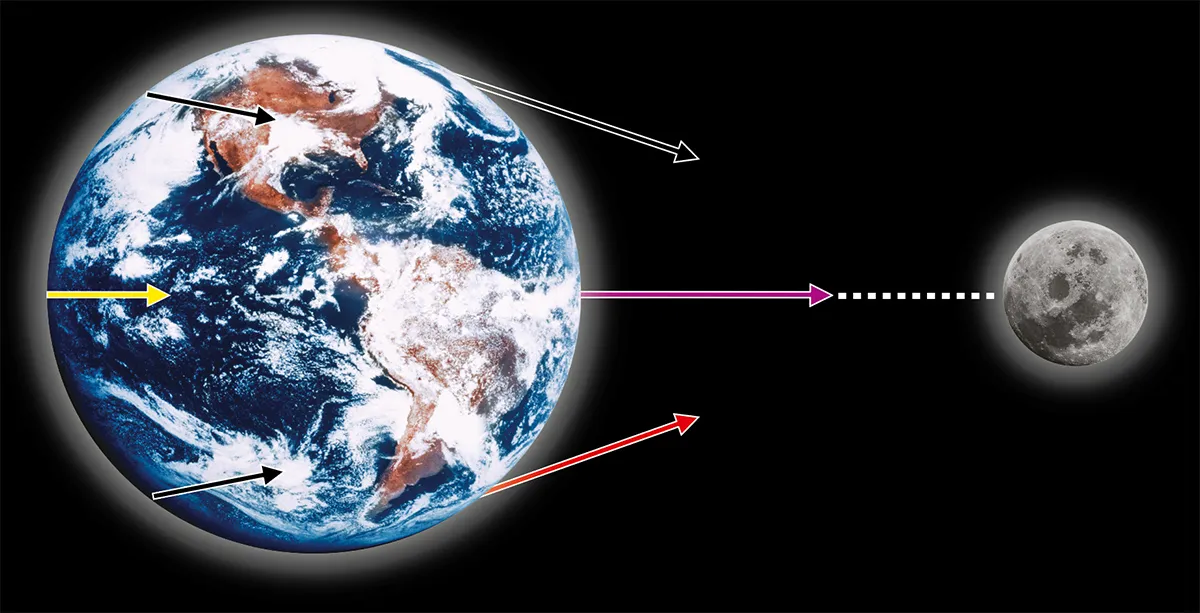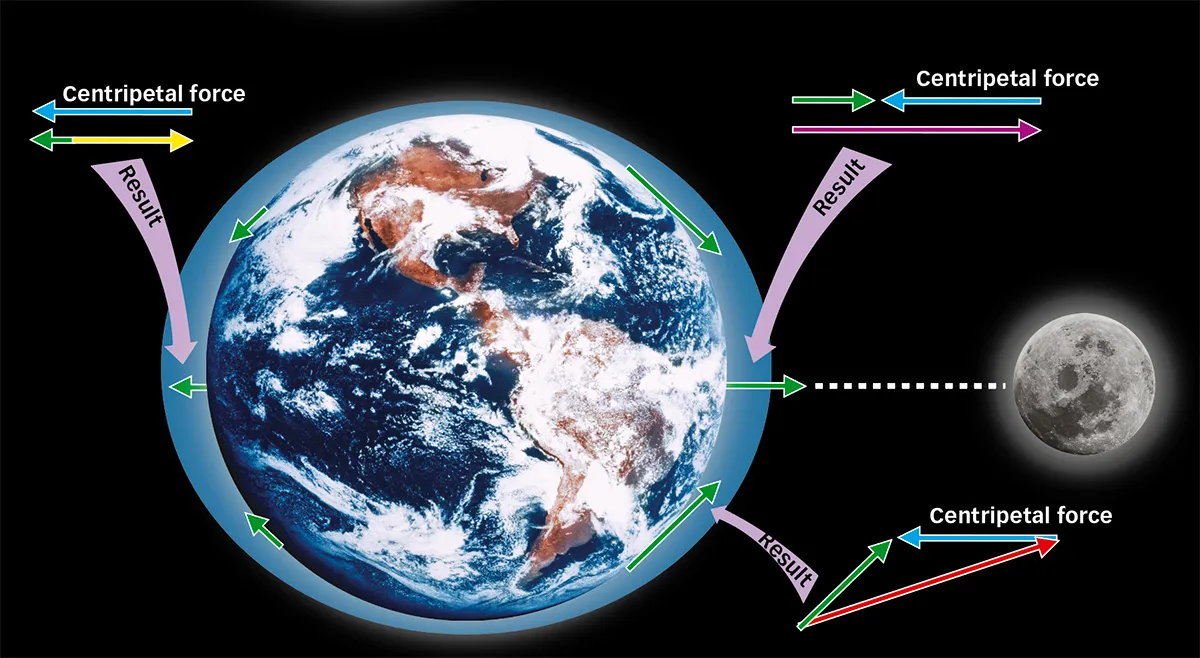The Moon's effect on Earth can't be ignored. It's our closest celestial neighbour and has inspired and intrigued stargazers for as long as there have been human beings to look up at the night sky.
But it also has a very real and tangible effect on the workings of our planet.
Read our guide on what would happen if the Moon exploded to find out more about this.

More about the Moon:
Earth's tides are largely influenced by the gravitational pull of the Moon, or to be more precise, between the gravitational workings of the Sun-Earth-Moon system.
There are two high tides and two low tides per lunar day, but why? What is causing this regularity along Earth's coastal regions, and what role does the Moon play?
To understand this, we have to think a bit more deeply about the gravitational relationship between Earth and the Moon.
Find out when the next full Moon is visible

The Moon’s gravitational pull on the oceans is stronger on the side of Earth closest to the Moon than it is on the opposite side.
But there is another force, which is the same everywhere on Earth’s surface, that opposes the Moon’s gravitational pull, called the ‘centripetal force’.
We say that the Moon orbits Earth, but actually they both orbit a point that lies within the Earth.
The centripetal force is the force that keeps the Earth moving in a small circular orbit around this point.

If this centripetal force is subtracted from the Moon’s gravitational attraction at different points on the Earth’s surface, we are left with a ‘differential gravitational field’.
This field has a net force acting towards the Moon on the side of the Earth closest to the Moon, and a smaller net force away from the Moon on the other side, which gives two tidal bulges.
Thus, the daily rotation of the Earth produces two high tides and two low tides every 24 hours and 50 minutes.
This article originally appeared in the October 2007 issue of BBC Sky at Night Magazine.
